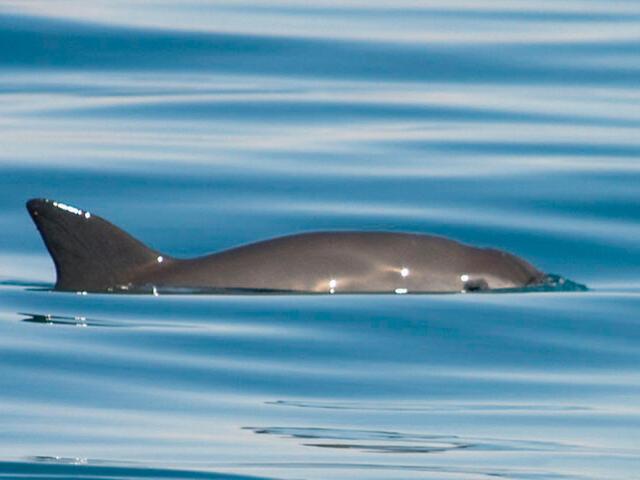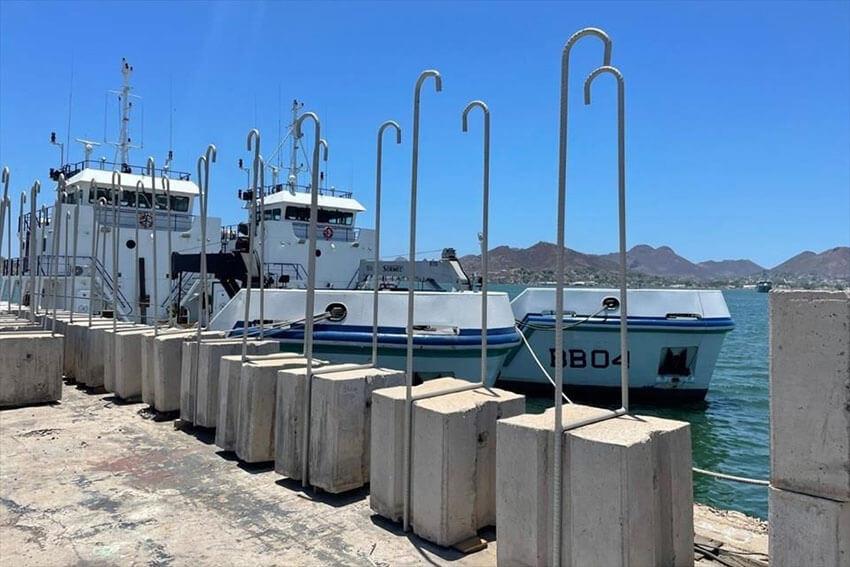Against all odds: The incredible resilience of the world’s smallest porpoise
This summer, conservationists in northern Mexico glimpsed something unusual poking above the dappled surface of the Gulf of California: a small dorsal fin surfacing next to an even smaller fin.

Cross-referencing the visual identification with sounds picked up on acoustic monitors, marine biologists were able to confirm that the sighting was a vaquita calf swimming next to its mother.
The news buoyed conservationists, many of whom had thought there was little hope of saving the elusive vaquita, the smallest and most critically endangered member of the cetacean order, which includes whales, dolphins and porpoises.
A 2021 census had identified just 10 to 13 vaquitas in the Vaquita Marine Refuge in the upper gulf.
“This is a very good sign," says Hector Licon, a fisheries expert with Environmental Defense Fund. “It’s still too early to celebrate, because there are so few surviving animals and progress on reducing threats has been slow. But the sighting of calves gives us very strong hope.”
French explorer Jacques Cousteau famously dubbed the Gulf of California “the aquarium of the world.” In the upper gulf, the waters of the vaquitas’ home range brim with biodiversity, including hundreds of fish species that converge on the area to reproduce.
“It has a reputation as a place where you could throw out a net and it would come out full,” says Licon. “That drew many more people into fishing.”
But in some cases, he adds, management has been inconsistent or almost nonexistent and repopulation rates for certain species can’t keep up with the numbers that fishers are extracting.
Plunging populations
The gulf’s marine biodiversity is also stressed by pollution, coastal development and climate change.
But marine biologists attribute most of the vaquita’s decline to the use of gill nets, walls of netting that hang in the water column. Depending on the size of a net’s mesh, it can sweep up unintended species of fish and marine mammals, including vaquitas, dolphins, turtles and sea lions.
Rule-skirting fishers often use long nets with large mesh sizes and leave these nets in the water much longer than legally allowed.
Vaquita populations had been declining for decades, but in the early 2010s, populations plunged as a market emerged for a large and endangered endemic fish called the totoaba. The totoaba’s swim bladder commands high prices in Asia, attracting illegal trafficking and organized crime.
“The problem for the vaquita is that it is about the same size as the totoaba,” says Enrique Sanjurjo, who directs the nonprofit Pesca ABC. “So a gill net designed to kill a totoaba also kills a vaquita, which will get caught in the net and drown.”
Alternative fishing gear
Pesca ABC was founded in 2016 by a group of sustainability-focused fishermen in the port of San Felipe, who promote vaquita-friendly methods in their community. These methods yield a higher-quality catch that can often be sold at a premium, but so far there’s only enough demand from seafood buyers to support about 30 fishers.
“Our fishers are using their boats as a testing platform for alternative gear,” says Sanjurjo. “We are exploring methods to catch efficiently and sustainably, using everything from hook-and-line approaches to long lines and various types of fish traps — basically anything except gill nets.”
The group also works to spot and collect “ghost gear,” the unmoored and abandoned nets that drift around the gulf, wreaking havoc on marine life.
Despite Pesca ABC’s efforts in the upper gulf, progress on controlling illegal gill net fishing has been slow.

Last year, under pressure from conservationists, the Mexican Navy dropped a grid of 193 concrete blocks with raised hooks that can entangle gill nets in the vaquita protection zone where gillnetting is banned. According to Mexico’s environment ministry, known as Semarnat, the effort resulted in a 90% decrease in gillnetting in the zone. The ministry recently announced plans to double the number of blocks and hooks in an expanded protection zone.
It takes a community
EDF and partners have been working to protect marine mammals and fish in the Gulf of California since 2011, supporting solutions that focus on community fisheries management, policy and technology.
To effectively help fishing communities, fish populations and endangered animals like the vaquita, “we need to have local communities on the side of conservation, to involve them in fisheries management,” Licon says.

One local group working toward that goal is known as the Regional Administrative Monitoring of Marine Species (MAREM).
In 2012, faced with an impending collapse of the economically important corvina fishery, a group of fishers in the upper gulf established a capture quota and a rights-based management model that balances the needs of fishing families with the need to protect the resources they depend on.
Recognizing that the efforts couldn’t succeed without reliable catch data, a group of women fishery workers set up a program to monitor the catch, with the support of EDF and partners.
“Monitoring is essential for sustainability in fishing,” says Poly Piñón, who directs MAREM’s staff of nine women and three men. “It gives us data that we share with fishing authorities and the community. We use the information the monitors collect to establish catch quotas, verify compliance with sizes, and detect vessels that are not registered or are using improper gear."
“Having a group of local women doing this work was important,“ Piñón adds. “It gave the community confidence that we were doing this without political interest, for the good of the society.“
Unfortunately funding for MAREM was cut in 2019 and the organization has had to drastically reduce its monitoring efforts.
“The totoaba fishing continues to cause disorder, and it’s putting a lot of pressure on legal fishermen as well as fish populations and animals like the vaquita too,” Piñón says.

Saving the vaquita will require a combination of enforcement, community involvement and market-based solutions to drive demand for sustainably caught fish, says Rafael Ortiz, who directs EDF’s fisheries and oceans work in Mexico.
Ortiz also calls for more commitment from federal and international intelligence agencies to go after the illegal trade in endangered species.
“We’re seeing that the priority for enforcement has picked up a little because of strong international pressure, but it’s not nearly enough,” he says. “Fortunately there are many people in civil society who are passionate and effective. They’re fighting not just on behalf of this little porpoise but also the many other fish and animals in the gulf, and the people who depend on them. These people are true heroes.”
As for the vaquita’s prospects, Ortiz is cautiously optimistic.
“The counting was done only inside the small area of the vaquita refuge, so it is likely that there are more individuals swimming just outside the zone. This species is still on the brink of extinction. But with expanded protections and enforcement, and the community on their side, there’s at least some hope that the vaquita could make a comeback.”


